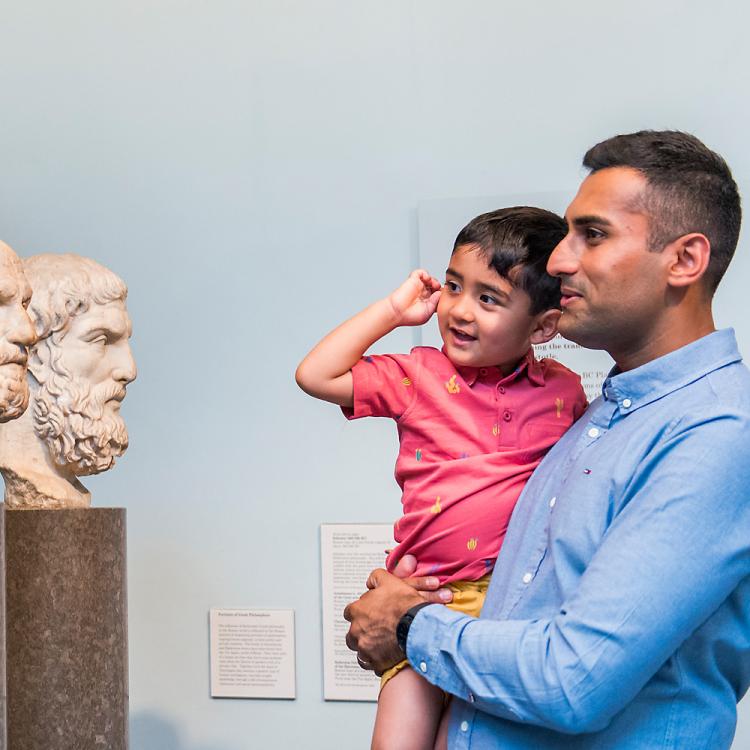Visiting the gallery
Opening times
Daily: 10.00–17.00 (Fridays: 20.30)
See full opening hours
Gallery audio guides
Listen on the Audio app, available on the App Store and Google Play.
Alexander the Great was a king of the ancient Greek kingdom of Macedon, located in northern Greece and adjacent countries.
During his leadership, from 336–323 BC, Alexander the Great conquered the Greek city-states, the Persian Empire and founded more than 70 cities creating an empire that stretched across three continents and covered about two million square miles.
The Hellenistic period dates from the death of Alexander the Great in 323 BC to the defeat of Cleopatra VII and Mark Antony at Actium in 31 BC.
After his death, Alexander's empire was divided up into kingdoms, ruled by his generals. The major dynasties sponsored major architectural programmes and were great patrons of the arts and culture.
Objects on display in Room 22 include a colossal carved column drum from the Temple of Artemis at Ephesos (one of the Seven Wonders of the Ancient World), the Demeter from Knidos in south-west Turkey and Greek bronzes.
Displays of smaller objects show the skill of ancient goldsmiths, metalworkers, potters and coroplasts (makers of clay or terracotta figurines) and gem cutters.
Take a virtual tour
Look in detail at the carved column drum from one of the Seven Wonders of the Ancient World, the Temple of Artemis at Ephesos, in Room 22.
Accessibility
- Some objects in this collection feature on the British Sign Language guide handset, available from the Audio guide Desk in the Great Court.
- Step-free access.
- View sensory map.
Visit Accessibility at the Museum for more information.







